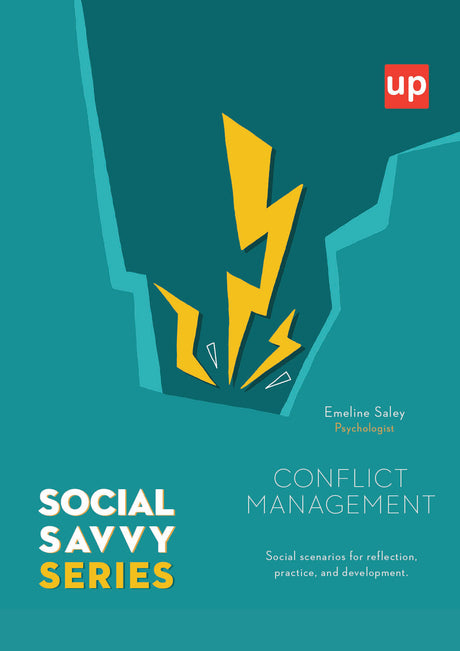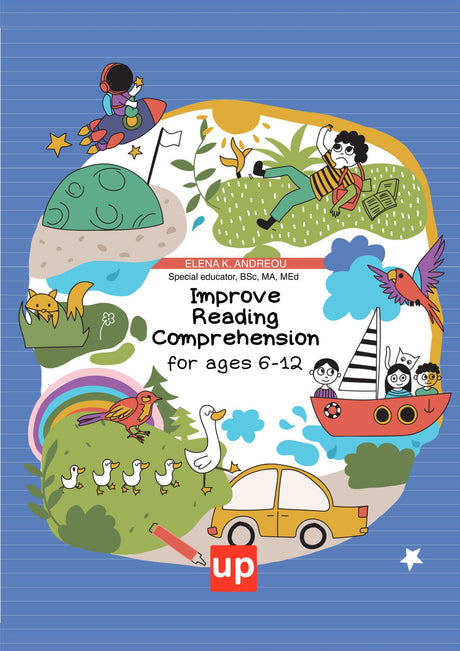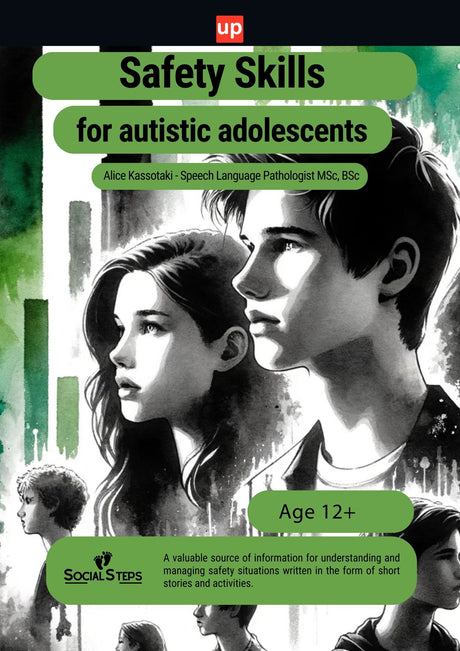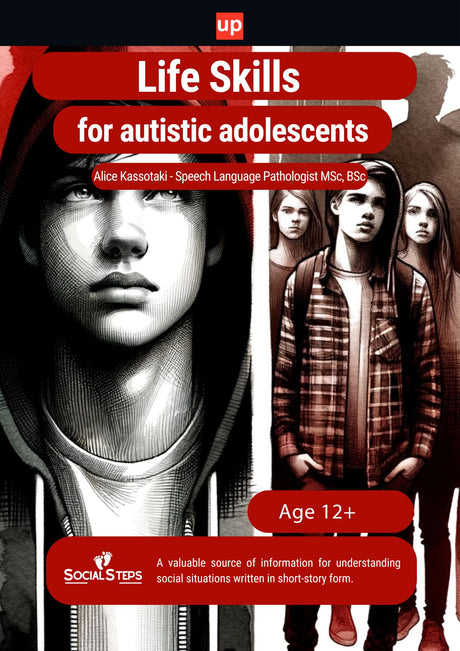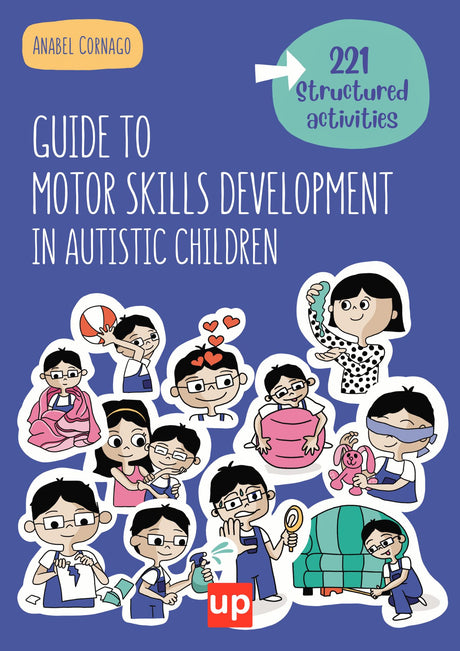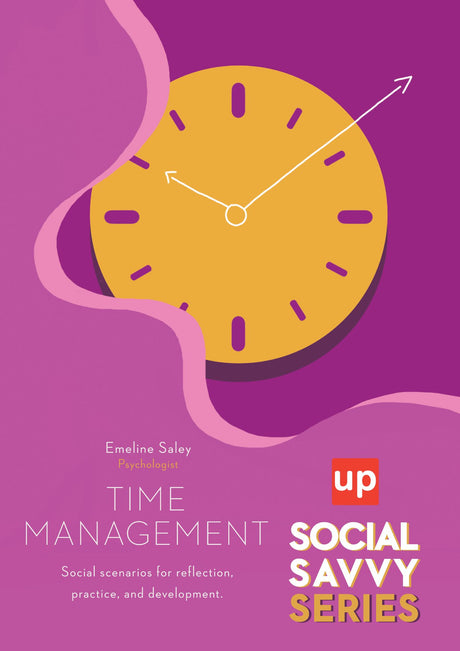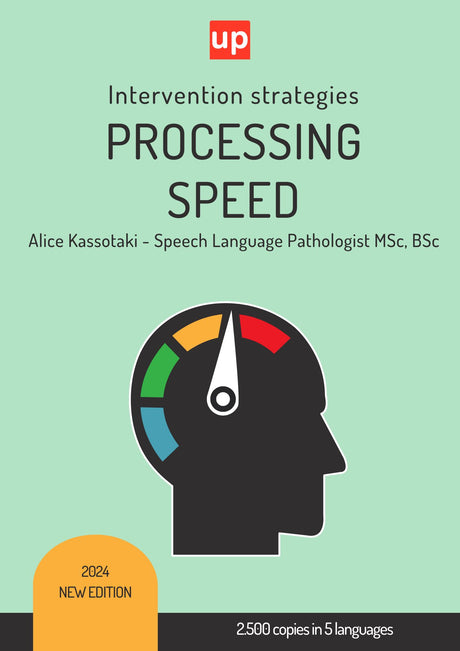Dyslexia is a common learning disability affecting around 5-10% of the world's population. It mainly affects a person's ability to read, write and spell, but its effects can extend to other areas of daily life.
This article aims to provide a comprehensive understanding of dyslexia, debunk common misconceptions and highlight effective strategies for supporting people with dyslexia to achieve success.
Dyslexia is not a reflection of a person's intelligence or abilities; children with dyslexia typically have average or above average intelligence, but face specific difficulties in processing written language.
 Prevalence and impact on individuals:
Prevalence and impact on individuals:
Academic impact: Dyslexia can lead to difficulties in reading, writing and spelling, which in turn can affect overall academic performance. A person with dyslexia may need additional support and adaptations in educational environments to reach their full potential.
Emotional impact: The challenges associated with dyslexia can lead to frustration, low self-esteem and feelings of inadequacy in individuals affected by the condition. Lack of understanding and support from others can exacerbate these feelings.
Social impact: Dyslexia can sometimes lead to social difficulties as individuals may feel isolated or stigmatised due to their struggles with language and literacy. This can lead to reluctance to participate in group activities or social situations involving reading and writing.
Occupational implications: Dyslexia can affect an individual's career choices and job performance, particularly in roles that require strong language and literacy skills. However, with appropriate adaptations and support, people with dyslexia can excel in a variety of areas
The proportion of people with dyslexia can vary from country to country due to a number of factors such as diagnostic tools, language environment and the education system. These factors can affect the identification, prevalence and support available for people with dyslexia in different regions.
Causes of dyslexia
A. Genetic factors: Dyslexia tends to run in families, suggesting a genetic link. Studies have identified several dyslexia-related genes that affect the development and processing of language by the brain.
B. Neurobiological factors: Individuals with dyslexia have differences in brain structure and function. These differences affect the way their brains process language, particularly in the areas responsible for phonological processing (the ability to break down words into individual sounds).
C. Environmental factors: Although not a direct cause of dyslexia, environmental factors, such as exposure to language and early literacy experiences, can influence the severity of the condition.
Common signs and symptoms
 The symptoms of dyslexia can vary in different age groups. Here are some common symptoms seen in preschoolers, school-age children and adults:
The symptoms of dyslexia can vary in different age groups. Here are some common symptoms seen in preschoolers, school-age children and adults:
Preschool age:
a. Children in pre-school age: a. Delayed speech development
b. Difficulty in learning new words
c. Problems with rhyming
d. Difficulty recognizing letters and their corresponding sounds
e. Problems with letter and number formation
f. Problems with sequencing
g. Difficulty following instructions
h. Difficulty with fine motor skills
School age:
a. Difficulty reading and difficulty decoding words
b. Difficulty in spelling and frequent spelling errors, not using punctuation or sticking words together
c. Writing challenges, such as poor handwriting and disorganized thoughts
d. Problems with reading comprehension in both speaking and writing
e. Difficulty learning and recalling new vocabulary
f. Problems with mathematical concepts, particularly with word problems and number sequences
g. Difficulty with organization and time management
h. Low self-esteem and frustration with schoolwork
Adults:
a. Difficulty in reading and difficulty in reading fluency
b. Challenges with spelling and written expression
c. Difficulty with reading comprehension and understanding complex texts
d. Difficulties with learning new information or skills involving language processing
e. Difficulty in organising thoughts and expressing ideas clearly
f. Challenges with time management and organization
g. Difficulty remembering verbal instructions or information
h. Low self-esteem and history of academic or work-related difficulties
It is important to note that symptoms of dyslexia may vary from person to person and may change over time with interventions and personal development. If you suspect dyslexia at any age, it is important to consult a qualified professional for an accurate assessment and appropriate support.
Misconceptions about dyslexia
Dyslexia is often misunderstood, which can lead to misconceptions that can hinder the support and success of people with the condition. Some common misconceptions include:
A. Intelligence and dyslexia: Dyslexia is not related to intelligence. People with dyslexia have average or above average intelligence, but face specific challenges in processing language.
B. Gender differences: Dyslexia affects both men and women, although some studies suggest that men may be diagnosed more often due to referral bias.
C. Letter and number reversal: While a child with dyslexia may reverse letters or numbers, this is not a defining feature of the condition.
D. Challenges in dispelling myths: these misconceptions can create barriers to understanding and supporting people with dyslexia, making it vital to raise awareness and provide accurate information.
Assessing and diagnosing
Assessment and diagnosis of dyslexia are essential steps to ensure that individuals receive appropriate support and interventions. Early identification and intervention can significantly improve long-term outcomes. The term specific learning disorder refers to a group of intrinsic disorders that impede the learning process and can affect one or more areas of learning functioning. The assessment and diagnostic process typically includes:
Importance of early intervention: Identifying dyslexia as early as possible allows for the implementation of effective strategies and accommodations that can improve academic performance, self-esteem, and overall quality of life.
Comprehensive assessment: Assessments for dyslexia include a comprehensive evaluation of the individual's cognitive, language, and reading skills. This may include standardised tests measuring phonological awareness, decoding skills, reading comprehension, spelling and writing, as well as informal measures such as interviews, observations and analysis of schoolwork.
Multidisciplinary approach: a team of professionals, including psychologists, speech and language therapists and teachers, can work together to accurately diagnose dyslexia and develop a tailored intervention plan. The team can also rule out other factors that could contribute to specific learning difficulties, such as hearing or vision problems, attention deficits or emotional factors.
Involvement of parents and teachers: Information from parents and teachers about a child's developmental history, academic performance, and behavior can provide valuable insights into a child's strengths and weaknesses. This information can help professionals develop a more accurate and comprehensive understanding of a child's needs.
Ongoing assessment: Dyslexia is a lifelong condition and a person's needs may change over time. Regular assessments can help monitor progress and ensure that interventions and adaptations remain effective and relevant.
Strategies for supporting people with dyslexia
There is no single approach to supporting people with dyslexia, but various evidence-based strategies can be effective in addressing their specific challenges:
A. Multisensory teaching methods: Multisensory approaches engage multiple senses simultaneously, helping individuals with dyslexia process and retain information more effectively. Techniques such as the use of visual aids, auditory cues and tactile experiences can enhance learning for people with dyslexia.
B. Assistive Technology: Technology tools such as text-to-speech software, audiobooks, and digital note-taking applications can help individuals with dyslexia access information and express their thoughts more easily.
C. Adaptations to educational environments: Providing accommodations such as extended time on exams, alternative test formats, and access to note-takers can level the playing field for students with dyslexia.
D. Developing self-esteem and confidence: Encouraging a growth mindset, emphasizing strengths, and offering emotional support can help dyslexic children build resilience and confidence, which are crucial to overcoming challenges.
Related conditions
A person who has dyslexia may also have comorbidities, which can further affect their learning and daily functioning. Some common co-existing conditions include:
Attention Deficit Hyperactivity Disorder (ADHD): ADHD is a neurodevelopmental disorder characterized by symptoms of inattention, impulsivity and hyperactivity. There is a high rate of co-existence between dyslexia and ADHD and the presence of both can exacerbate learning difficulties.
Dysgraphia: Dysgraphia is a learning disability that affects a person's ability to write coherently and legibly. Dyslexic children may also struggle with dysgraphia, which can exacerbate their writing and spelling challenges.
Dyslexia: Dyscalculia is a learning disability that affects a person's ability to understand and perform mathematical calculations. Dyslexia and dyscalculia can co-exist, resulting in challenges in both language and mathematical skills.
Language disorders: Some people with dyslexia may have other language disorders, such as speech sound disorders or expressive/receptive language disorders, which may affect their ability to communicate effectively.
Auditory processing disorder (APD): APD affects the way the brain processes auditory information, leading to difficulties understanding speech and distinguishing between sounds. This condition can co-exist with dyslexia, further complicating language processing.
Visual processing disorders: Visual processing disorders affect the way the brain processes visual information, which can lead to difficulties in tasks such as reading, writing and pattern recognition. These disorders can co-exist with dyslexia and exacerbate difficulties in reading and writing.
Anxiety and depression: The challenges associated with dyslexia and other learning disabilities can contribute to feelings of anxiety and depression. Emotional support and appropriate interventions can help mitigate the impact of these mental health problems on an individual's wellbeing and academic performance.
It is important to consider the possibility of coexisting conditions when assessing and supporting individuals with dyslexia, as the presence of additional challenges may require tailored interventions and adaptations.
Dyslexia and success: Inspirational stories
Despite the challenges associated with dyslexia, many individuals have gone on to achieve remarkable success in a variety of areas. These stories can inspire and offer hope:
A. Famous people with dyslexia: Several well-known celebrities, such as Albert Einstein, Steven Spielberg, and Richard Branson, have dyslexia. Their achievements prove that dyslexia does not have to limit one's potential.
B. Overcoming challenges and achieving goals: Inspiring stories of individuals with dyslexia overcoming obstacles and achieving their goals can serve as powerful reminders of the importance of perseverance, determination, and support.
C. Lessons from success stories: These stories can teach us valuable lessons about the power of self-confidence, the importance of embracing one's unique strengths, and the impact of a supportive community.
Understanding dyslexia is vital to removing barriers and creating a more inclusive and supportive society. By raising awareness, dispelling misconceptions and providing the necessary support and resources, we can enable people with dyslexia to reach their full potential and succeed. It is important to remember that dyslexia is only one aspect of a person's identity and with the right support, people with dyslexia can thrive in their personal and professional lives.
Original content from the Upbility writing team. This article, in whole or in part, may not be republished without attribution to the publisher.








